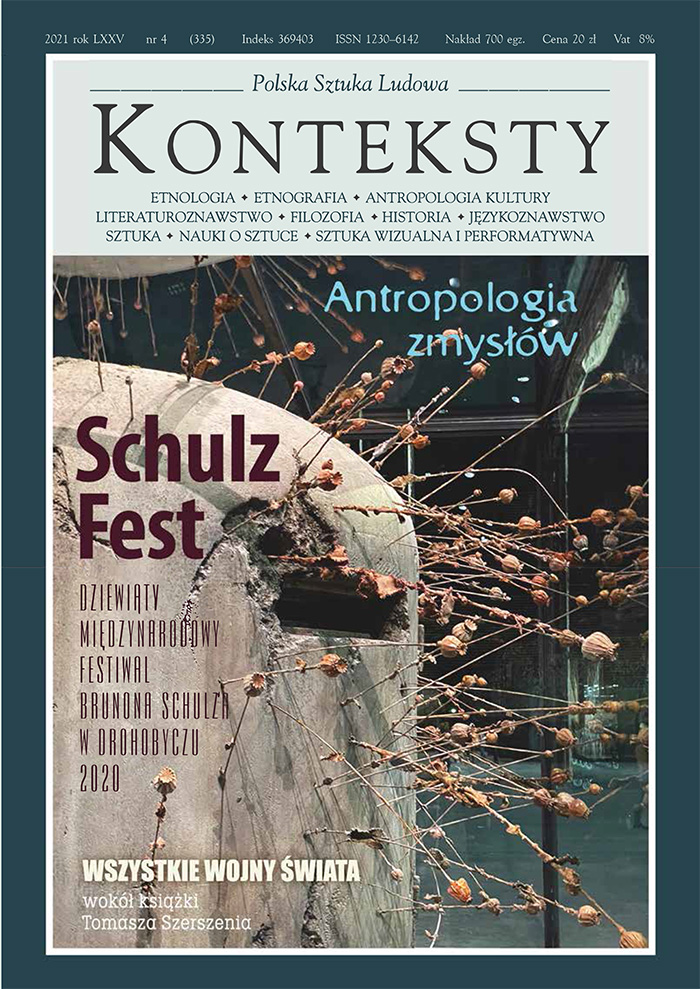Architekt jako fictor – fikcja jako cyberantropologia współczesności
The Architect as Fictor – Fiction as the Cyberanthropology of Contemporaneity
Author(s): Marta LeśniakowskaSubject(s): Social Sciences, Fine Arts / Performing Arts
Published by: Instytut Sztuki Polskiej Akademii Nauk
Keywords: Wieśland;
Summary/Abstract: A presentation of an architectural-anthropological project from the domain of urban studies devised by young authors: architect Jan Szeliga and sociologist and social anthropologist Krzysztof Janas (2019). The Wieśland, czyli miejska fantazja kryta strzechą (Villageland, or an urban fantasy with a thatched roof) project is a utopian vision of a recreation park situated on the National Stadium commons in Warsaw. Allegedly humorous and resorting to grotesque and irony, it pertains to the dreams of large-city inhabitants about a rural escape room. In this case, the authors borrowed methods of designing and management from marketing and productivity techniques as well as on-demand economy, and with the help of the Disneyland model enrooted in contemporary global pop culture they created an alternative fictional world, an allotypy. Its material consists of cultural clichés concerning rural / folk qualities together with Polish national mythology balancing between (post)Romantic, mythicized, literary-painting, and pop-cultural visions of the village and rustic qualities, which are a social construct created by urban culture. With the assistance of the collage technique they designed Virtual Reality to show the users of “Villageland” three model-like idylls: agrarian, wilderness, and recreations. “Tableaux vivants” modelled on ethnographic Skansen museums and human zoos (ethnological villages) recreate scenes from old paintings (Polish and European), in which actors-“peasants” dressed in peasant costumes are watched by contemporary urban “tourists”. Use was made of the mise-en-scène strategy borrowed from the theory of the theatre and the cinema. With the assistance of appropriation art, i.e. artistic cannibalism / appropriation / sampling, images familiar from the tradition of visual culture create for the present-day spectator new texts / images and new senses. The project is generational: the authors are members of the current generation of the young urban networking community. Their “Villageland” is a toponym that identifies itself with Warsaw from the 2020s, and as a project from the domain of urban anthropology it studies contemporary industrial and post-industrial societies as well as cultural aspects of urbanism as a complex of typical forms, lifestyles, and models of urban community. Visually, “Villageland” applies the convention of board games in their current version of digital technique and aesthetics applied by representatives of digital art / internet art and creating alternative reality. This fantasy about eutopia, i.e. “a harmonious, happy and good place” existing outside the order of daily life is thus an interactive, immersive game in which fiction and reality intermingle. In the virtual landscape of Neverland on the Vistula urban tourists make their way towards a new temple of mass-scale entertainment, i.e. the National Stadium with its quasi-folk aesthetics imitating a Cepelia (chain of shops offering traditional folk art and handcrafted goods) wicker basic featuring national colours. As anthropology of the present day the fiction of “Villageland” represents irony and satire aimed against “new folk art” present in contemporary national populism and artistic praxis. As cyber-/anthropo-fiction “Villageland” appears to realise the view expressed by David Shields, author of the generational manifesto: Reality Hunger, namely that “Anything processed by memory is fiction”. “Villageland / Wieśland” is a legible political project: it diagnoses present-day Polish society split into two antagonised “tribes” conducting a dispute about imagined identity, i.e. the so-called “national character”. This polyvalent project is a manifesto of the generation of Polish thirty-year-olds, who with the aid of an urban theme park depicting a “rural idyll” critically diagnose contemporary Polish society. This is why “Wieśland” is a case study from the realm of critical art, whose features include political mockery. Here the architect-fictor creates a political hypertext, which renders visible that, which conceals itself beneath the ostensibly entertainment-oriented surface of allotopy.
Journal: Konteksty
- Issue Year: 335/2021
- Issue No: 4
- Page Range: 207-209
- Page Count: 3
- Language: Polish
- Content File-PDF

